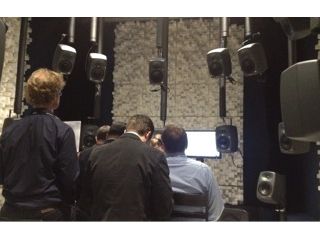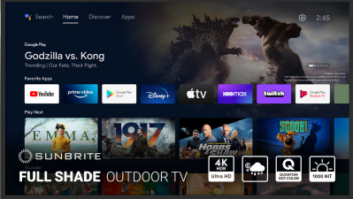
Washington — The Advanced Television Systems Committee (ATSC) has begun reviewing three proposed audio formats for the next-generation ATSC 3.0 digital terrestrial TV standard.
Dolby Labs, DTS, and an alliance of Fraunhaufer, Qualcomm and Technicolor have proposed competing standards, all of which support 2.0 channels, 5.1 channels, and object-based, or immersive 3D, surround.
Object-based surround decoding is already available in multiple A/V receivers from Dolby and, later this year, from DTS for decoding object-based surround on disc-based and streamed video.
The three 3.0 audio systems will be tested this summer with the intent to make one of them the ATSC’s candidate audio standard by year’s end, a spokesman said. A standard for the physical, or transmission, layer of ATSC 3.0 is also on track to reach candidate-standard status by the end of the year.
Once the candidate standards are set, manufacturers can build equipment to test them, and final adjustments can be made to the standards before they go to a membership vote.
Completion of the ATSC 3.0 standardization process will probably occur in 2016, the spokesman said.
The audio standards include an immersive audio capability that will enable “high spatial resolution in sound-source localization in azimuth, elevation and distance, and provides an increased sense of sound envelopment throughout the listening area,” said ATSC president Mark Richer.
ATSC 3.0 audio also requires “personalization” capabilities, including dialog control, alternate audio tracks, assistive audio services, other-language dialog, special commentary, and music and effects. The standard will also normalize content loudness with dynamic-range contouring.
About 60 sound tracks have been selected for testing the three proposed audio systems. The material includes material to test three immersive audio formats: 7.1+4, which includes four height channels above the listener; 22.2 channels, which is a surround format pioneered by NHK as part of its Super Hi-Vision system; and High-Order Ambisonics (HOA), described as a “scene-based” format that’s independent of channels and can be optimally mapped into whatever reproduction channels are available in a particular home. HOA will be rendered to 22.2 channels for the tests.
For its part, DTS proposed DTS:X, which supports audio channels, object-based audio, advanced loudness and dynamics management, and DTS Headphone:X technology, which enables any set of headphones to reproduce surround sound.
For their part, Fraunhofer, Qualcomm and Technicolor have proposed MPEG-H audio, said to make it possible to use channel-based and/or sound-scene based technology in combination with audio objects.
Flexible rendering technology is said to allow the best adaptation of content to the actual listening environment and compensate for misplaced speakers. For 5.1 surround sound, bitrates of 96kbps to 256kbps will “deliver good to excellent quality, whereas immersive reproduction can be achieved with commonly used broadcast audio data rates of 384kbps,” the companies said.
Dolby’s proposed audio system is called Dolby AC-4.
ATSC is the international organization that develops voluntary standards for digital television. Members represent the broadcast, broadcast equipment, motion picture, consumer electronics, computer, cable, satellite and semiconductor industries.












